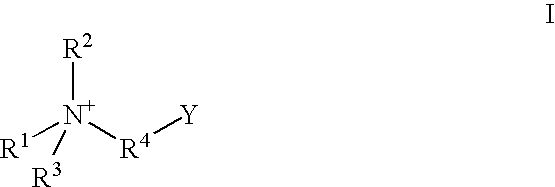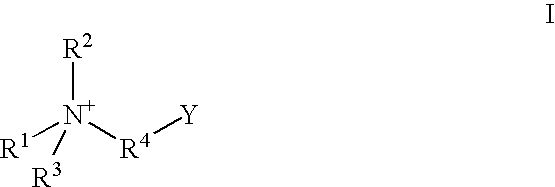Opthalmic compositions with an amphoteric surfactant and an anionic biopolymer
an amphoteric surfactant and composition technology, applied in the direction of detergent compounding agents, ampholytes/electroneutral surface active compounds, lens cleaning compositions, etc., can solve the problems of affecting visual acuity and patient comfort, degrading lens performance, lack of correlation
- Summary
- Abstract
- Description
- Claims
- Application Information
AI Technical Summary
Benefits of technology
Problems solved by technology
Method used
Image
Examples
examples 1.- 7
Examples 1.-7
[0071]Contact lens compositions of Example 1.-7. listed in Table 4 are prepared using the following process (components are listed in wt. % unless noted in ppm). A volume of purified water equivalent to 85-90% of the total batch weight is added to a stainless steel mixing vessel. The following batch quantities of components are added to the water with stirring in the order listed: sodium chloride, edetate disodium, boric acid, sodium borate and poloxamine 1107. The solution is mixed (stirred) for not less than 10 minutes to ensure complete dissolution of each of the components. The solution is warmed to a temperature not less than 70° C. and the sodium hyaluronate is added. The warmed solution is stirred for at least 20 minutes until the sodium hyaluronate appears to be completely dissolved. The pH of the resulting solution is measured at room temperature, and if necessary, the pH is adjusted with 1N NaOH or 1N HCl (target pH=7.5). The solution is then heat sterilized a...
PUM
| Property | Measurement | Unit |
|---|---|---|
| wt. % | aaaaa | aaaaa |
| wt. % | aaaaa | aaaaa |
| molecular weight | aaaaa | aaaaa |
Abstract
Description
Claims
Application Information
 Login to View More
Login to View More - R&D
- Intellectual Property
- Life Sciences
- Materials
- Tech Scout
- Unparalleled Data Quality
- Higher Quality Content
- 60% Fewer Hallucinations
Browse by: Latest US Patents, China's latest patents, Technical Efficacy Thesaurus, Application Domain, Technology Topic, Popular Technical Reports.
© 2025 PatSnap. All rights reserved.Legal|Privacy policy|Modern Slavery Act Transparency Statement|Sitemap|About US| Contact US: help@patsnap.com



